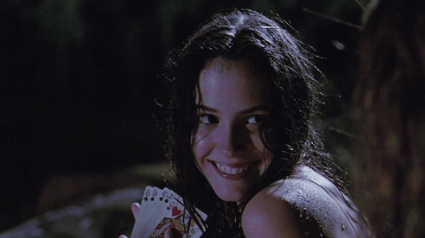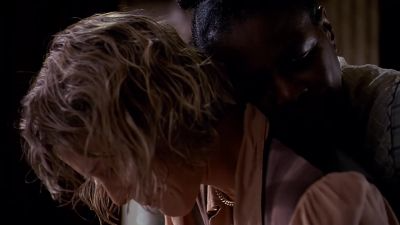
In Fried Green Tomatoes, visual symbolism plays a subtle yet powerful role in shaping how we experience the emotional arcs of its characters. Among the many symbolic elements used, rain stands out as a motif that appears sparingly, yet always at moments of transformation, grief, or release. It may not pour across the screen in every scene, but when it does, it arrives with emotional weight.
Rain as Grief: The Loss of Buddy
One of the first and most devastating uses of rain imagery is tied to the death of Buddy Threadgoode, Idgie’s older brother. Though the accident itself may not happen under rainfall, the atmosphere surrounding the aftermath is soaked in emotional dampness, with clouds, shadow, and stillness that evoke the heaviness of a storm that just passed — or one that lingers inside.
For Idgie, Buddy’s death is the defining trauma of her youth, and nature seems to grieve with her. The lack of bright light, the muted sky — all of it aligns with the feeling that the world has broken. Mưa, dù trực tiếp hay ẩn dụ, tượng trưng cho nỗi đau không thể gọi tên, cho cảm giác lạnh lẽo sau mất mát.
Rain as Release: Ruth’s Escape from Abuse
Another critical moment where rain falls visibly on screen is during Ruth’s escape from her abusive husband Frank Bennett. As Ruth finally chooses to leave and return to Whistle Stop with Idgie, a rainstorm breaks out, almost as if the sky is cleansing her of the fear and control that has shadowed her life.
The imagery is striking: Ruth, holding her child close, steps into the downpour not with hesitation, but with resolve. The rain is not punishing — it is purifying. In that moment, it serves as a baptism of sorts: Ruth is reborn not just as a survivor, but as someone choosing her own life.
Idgie is there, of course, offering silent support. The two women, soaked but smiling faintly, are washed clean of their past, ready to build a new one — together.

Rain and Connection: Evelyn and Emotional Release
Although Evelyn’s story mostly takes place indoors or in cars, there are symbolic rain moments during her transformation too — often after her visits to Ninny. The parking lot scenes, where she sits in silence, reflect her inner storms.
At one point, as Evelyn begins to realize how stifled and invisible she feels, we hear distant thunder and see her looking out at the rainy windows. These visual cues mirror her emotional state — pent-up anger, frustration, and the longing to break free.
Later, when Evelyn begins to reclaim her voice, the clouds lift — literally and metaphorically.
The Rain That Never Comes — Emotional Drought
Interestingly, Fried Green Tomatoes also uses the absence of rain to make a point. In moments when grief is stifled or healing is delayed — such as after Ruth’s eventual illness and death — the skies remain dry, hot, or oppressive. The drought becomes symbolic of emotional suppression, of wounds left unhealed, tears that refuse to fall.
It’s not until later, when the characters begin to speak the truth, face their past, or say goodbye, that storms finally break again, allowing space for grief and healing.
Rain as Nature’s Compassion
In a film built around memory, trauma, and healing, rain is nature’s quiet response to the chaos of the human condition. It does not interrupt — it listens. It comes when emotions swell beyond containment, when the characters are most vulnerable, most alive.
Whether as a metaphor for sorrow, rebirth, or forgiveness, rain in Fried Green Tomatoes reflects something universal: the sense that grief must be felt to be released, and that after the storm, there is always something new — not necessarily easier, but clearer.
